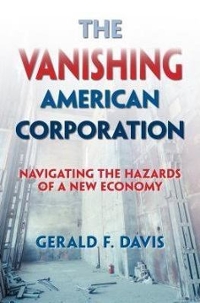Question
Analyze the key factors of the 1929 stock market crash and the Great Depression of the 1930s THE INFO BELOW WILL HELP THE CRASH OF
- Analyze the key factors of the 1929 stock market crash and the Great Depression of the 1930s
THE INFO BELOW WILL HELP
THE CRASH OF 1929 AND THE GREAT DEPRESSION
The 1929 stock market crash provides another important lesson in financial and economic history. The roots of the problems that caused the crash can be traced back to the First World War and the US government's adoption of debt financing through the sale of war bonds. The bonds meant that the country's citizens were essentially lending the government the money to finance the war effort, and this was the first large-scale debt financing of this kind in modern times.
Citizens were even encouraged at times to borrow money themselves in order to buy "Liberty Bonds" and patriotically support the nation. This opened up the practice of borrowing money to finance purchases. After the war, Americans had discovered the magic of credit. People now had a way to finance what was to become known as "The American Dream" - borrow money to buy a house, a car, and appliances on an "easy payment plan."
Borrowing money in order to make an investment was popularized by the War Bonds campaigns. It became common for people to borrow money to make stock purchases. In some case it was possible to buy "on margin," putting down as little as 10% of the full value of the stocks you bought. This is known as leveraging.
All of that will work fine and the money owed can be paid back while still making a profit as long as stock values continue to rise. But if stock prices drop, a downward leverage will occur. In 1927 and 1928, the stock markets reached new all-time highs. Greed knew no bounds and borrowing to invest seemed like a can't-lose proposition. There appeared to be no limit to upward growth, some stocks quadrupling in value in the space of just two years. Two out of every five bank loans were made to people borrowing to buy stock.
Then on October 24, 1929, a date known in history as Black Thursday, the trouble started. The markets suddenly plummeted dramatically. Nervous investors told themselves it was just a onetime market correction as a larger than usual number of investors took some profits.
After all the stock traders went home on Black Thursday, a janitor begins to clean
up the mess left behind on the trading room floor. [Source: Nationaal Archief /
No restrictions].
Unfortunately, Black Thursday was followed by Black Tuesday. Over the course of six days the market lost a third of its entire value. The banks started calling in loans to investors, forcing people to sell their stock to pay back the bank. This accelerated the market decline. In response to the borrowing frenzy that had preceded the crash, the government had made a fatal mistake in increasing interest rates dramatically. This meant there was a virtual freeze in all types of borrowing and spending and these fuelled the further downward spiral of the economy.
The crash was followed by what has come to be known as the Great Depression. It lasted for more than ten years, and it took World War II to bring the Western world - and particularly the United States - out of this desperate era of poverty.
HAVE WE LEARNED ANYTHING?
To paraphrase the philosopher George Santayana, " those who do not learn from history are doomed to repeat it." This is entirely relevant when it comes to understanding patterns of boom and bust. They happened again and again in much the same way since the time of Ancient Rome.
Some important lessons we can learn from the manias and crashes of the past:
- Manias in the markets often begin with "the next big thing" or craze, such as the dotcom craze at the end of the 90s (and the mini-crash that followed it); a similar craze today might be investment in social media or companies like Google.
- Through word of mouth or the media, opinion leaders fuel the public's interest and stir up a herd mentality. These leaders include financial pundits, stock promoters, and media figures such as Mad Money host Jim Kramer on CNBC.
- Once a good thing is identified, greed takes hold and emotion and wishful thinking drive decisions as much as rational analysis. The phrase irrational exuberance is sometimes used to describe this phenomenon.
- A period follows where the market is driven up and up by speculative buying; this becomes self-fulfilling as greed keeps buying high, driving prices up, and giving the impression of endless profit.
- The big time Investors, including those managing hedge funds, tend to be the first to realize that the markets are overheated and that further growth is unsustainable. They sell and take their profits out before the rest of the herd begins to smell fear.
- As market prices start to drop, fear can easily turn to panic, which tends to feed on itself and accelerate sell-offs and price drops until there is a full-scale crash.
It's important for everyone to recognize the signs of excessive greed and runaway boom in order to avoid the risks of excessive fear and a devastating bust.
Step by Step Solution
There are 3 Steps involved in it
Step: 1

Get Instant Access to Expert-Tailored Solutions
See step-by-step solutions with expert insights and AI powered tools for academic success
Step: 2

Step: 3

Ace Your Homework with AI
Get the answers you need in no time with our AI-driven, step-by-step assistance
Get Started


